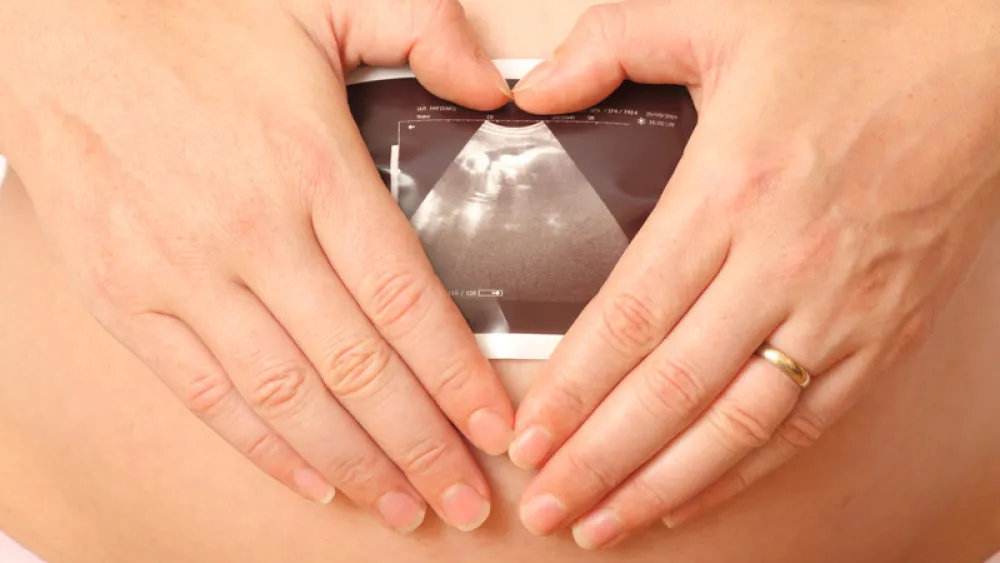




Family Health
Congenital Heart Defects: Making Sense of Little Broken Hearts
Published: Feb. 12, 2020

Understanding the Risk
Thousands of known birth defects have been studied and treated. Roughly three out of every 100 babies are born with one. The most common birth defects involve the heart, but still, the chance of a baby being born with a congenital heart defect (CHD) is less than one in 100. And furthermore, a baby born with a heart defect has a better chance than ever of living a normal, healthy life.
One of the biggest parts of my job is identifying heart defects. That’s done with an ultrasound, which can be extremely useful with baby’s cooperation. It’s standard to carefully inspect the heart with as many views as the baby will allow us to see. Sometimes baby is positioned in a way that makes it difficult to see all angles of the heart. In those instances, expectant mothers may need to return for a second look – but it’s nothing to panic over! This imaging has the ability to rule out up to 80% of heart defects.
That said, not all heart defects can be diagnosed with an ultrasound. Many aren't diagnosed until the newborn period.
Most Common Congenital Heart Defects
Some of the most common heart defects are:
- Ventricular septal defect (VSD), or hole in the wall that separates the lower chambers of the heart
- Atrial septal defect (ASD), or hole in the wall that separates the two upper chambers of the heart
- Patent ductus arteriosus (PDA), or persistent blood vessel connected to the aorta
- Coarctation of the aorta, or narrowing of the artery that carries blood to the rest of the body
- Tetralogy of Fallot, or combination of four heart defects: VSD, the narrowing of the pulmonary valve and artery, an enlarged and misplaced aorta, and a thickened lower right chamber of the heart
- Transposition of the great arteries, or the swapped positioning of the two main arteries from the heart
- Atrioventricular septal defect, or hole in the center of the heart
The links provided can serve as great resources for more information, but don’t hesitate to lean on the knowledge and support of your provider if you’re given one of the diagnoses above. Your care team exists to make sense of what may be a very scary and confusing time for your growing family.
The Path and Treatment Plan of CHD
If a heart defect is found, there’s generally a clear path that patients follow with their care team. The steps include:
- Naming the defect with as much specificity as possible. This is accomplished by fully evaluating the heart, which involves fetal echocardiography, or fetal echo. Similar to an ultrasound, it provides specialists a better view and understanding of the heart.
- Ruling out any other fetal health issues or complications. These may include other birth defects, potential genetic considerations and pertinent pregnancy factors.
- Providing families a road map of expectations. Once a diagnosis is made, care providers are able to paint a picture of what expectant families can and will face throughout the remainder of pregnancy and after delivery. While these appointments can be lengthy and rather emotional, the goal is for patients to leave with as much information as possible.
- Referring families to a trusted cardiology team if newborn treatment appears necessary. A team that specializes in pediatric cardiology is often critical in helping determine a pregnancy plan moving forward. Each plan is different and based on what baby will or won’t need after delivery. Regardless of the plan – and where baby may need to be transferred following delivery – Methodist always aims to keep the time of separation between mother and child as short as possible in those first few days.
While research continues into the causes of CHD, we don’t yet have all the answers. And the fact that I don’t fully know how to help my patients lower their risk of CHD can be frustrating. But again, a long, healthy life is possible with CHD, and there are a number of support networks and resources that illustrate that.
Trust your doctor, and trust the process. The health and well-being of some of the littlest hearts always weigh heavy on ours.
More Resources
- Here’s what you need to know if your pregnancy is deemed high-risk
- Can you actually prevent prematurity? Learn more
- Planning for pregnancy? Learn why preconception health matters
- Learn about the importance of folic acid

